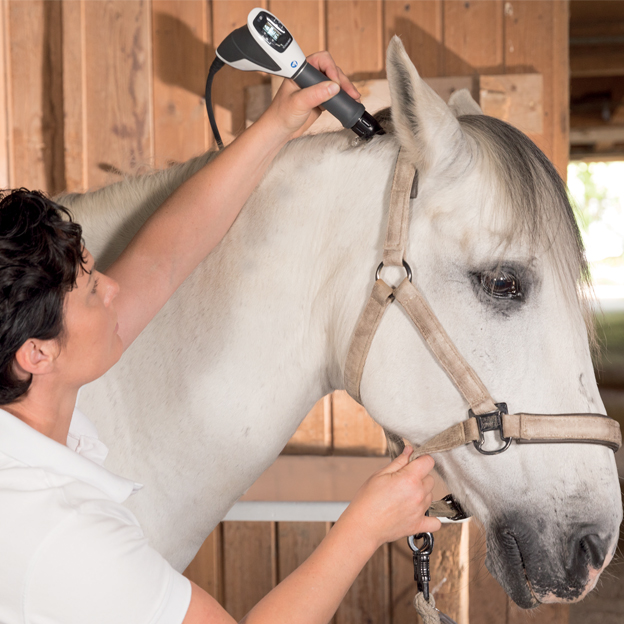Every little thing You Required to Find Out About Equine Therapy for Mental Wellness
Every little thing You Required to Find Out About Equine Therapy for Mental Wellness
Blog Article
Assessing the Performance of Laser Therapy in Horse Therapy for Injury Rehab
The analysis of laser treatment's efficiency in equine injury rehab depends upon several aspects, including recovery time, pain mitigation, and tissue regeneration. Medical research studies suggest noteworthy enhancements in problems like tendonitis and osteo arthritis, connected to boosted mobile function and elevated ATP production. Veterinarians frequently observe superior outcomes with laser therapy compared to conventional techniques, positioning it as a critical element in equine treatment. The need for continuous surveillance and personalized treatment strategies can not be overstated. What particular medical evidence supports these insurance claims, and how do vets implement these methods in practice?
Understanding Laser Treatment
Laser treatment has become a crucial tool in vet medicine, particularly in the therapy of equine conditions. Known for its non-invasive nature and effectiveness, laser therapy involves the application of specific wavelengths of light to stimulate cells repair and lower inflammation. This healing modality is progressively preferred for its capability to speed up the recovery process in equines suffering from a range of bone and joint injuries and persistent problems.
The key system behind laser therapy is its capacity to improve mobile features. When laser light passes through the skin, it is absorbed by mitochondria, the giant of cells, which causes boosted production of adenosine triphosphate (ATP) This biochemical energy boost helps with mobile repair work and regeneration. In addition, laser treatment advertises vasodilation, enhancing blood flow and oxygen shipment to broken cells, hence speeding up recovery.
In equine medicine, laser treatment is especially helpful for conditions such as tendonitis, osteoarthritis, and injury recovery. The strategy is lauded for its pain-relieving buildings, enabling steeds to restore flexibility and feature extra swiftly. Vets also appreciate its very little negative effects contrasted to various other treatment techniques, making it a reliable and risk-free option for equine care.

Exactly How Laser Treatment Works

Upon absorption, these photons cause a series of biochemical modifications, boosting mitochondrial feature and leading to enhanced adenosine triphosphate (ATP) manufacturing. This increase in ATP speeds up mobile metabolic rate, promoting tissue repair service and regrowth. Furthermore, laser therapy modulates inflammatory actions by influencing cytokine levels and lowering oxidative stress and anxiety, thus relieving pain and swelling.
An additional significant facet of laser therapy is its duty in improving microcirculation. The therapy advertises vasodilation, improving blood circulation and oxygen shipment to damaged tissues (Equine Therapy). This helps with the removal of mobile debris and supports the spreading of fibroblasts and collagen synthesis, essential for wound healing
Medical Evidence
The effectiveness of laser therapy in equine therapy has actually been corroborated with numerous clinical research studies, showcasing its healing potential throughout a series of conditions. Several regulated trials and empirical studies have recorded considerable renovations in tissue fixing, pain reduction, and total rehabilitation timelines. For example, a study performed by Turner et al. (2012) demonstrated that steeds treated with low-level laser treatment (LLLT) for ligament injuries exhibited increased recovery compared to those getting traditional therapies. The research highlighted a marked decrease in swelling and boosted collagen formation.
Likewise, research by Johnson and this coworkers (2015) focused on equine muscle mass injuries, disclosing that laser therapy considerably quickened muscle mass fiber regrowth and reduced muscle mass tightness. Medical evaluations have revealed that laser therapy can reduce persistent conditions such as osteo arthritis.
Veterinarian Insights

Vets additionally value the versatility of laser treatment. It can be utilized for a large range of problems, from superficial wounds to deeper musculoskeletal injuries. Dr. Emily Brown highlights its energy in treating problems like tendonitis and osteoarthritis, where traditional therapies usually fail. She explains that laser therapy can be tailored to the particular requirements of each steed, ensuring optimal outcomes.
Moreover, vets value the capacity to integrate laser treatment with various other therapy techniques. This multimodal method can enhance general treatment effectiveness, providing a thorough remedy for equine rehab. Such recommendations from seasoned specialists underscore the expanding approval and application of laser treatment in equine medicine.
Practical Factors To Consider
A vital aspect of applying laser treatment in equine treatment includes recognizing the useful considerations that guarantee its efficiency and security. First and leading, it is important to select the suitable laser tool, as different kinds vary in wavelength, power, and penetration depth. Equine Therapy. Vets need to link be fluent in these parameters to customize therapy protocols efficiently per injury type
Moreover, the frequency and period of laser therapy sessions need mindful planning to take full advantage of therapeutic benefits while lessening any kind of possible negative effects. Regular tracking of the steed's feedback to therapy can guide needed modifications in the therapy regimen. Developing a safe and regulated environment during treatments is additionally crucial to protect against unexpected direct exposure to laser discharges, which can damage both the steed and the handler.
Educating and qualification of personnel providing laser therapy are extremely important to guarantee appropriate method and to support security criteria. Furthermore, preserving exact documents of each session, including laser settings and observed results, is important for evaluating the total performance of the therapy and for making data-driven choices.
Final Thought
Laser therapy has emerged as an effective method in equine injury rehab, supplying considerable advantages in recuperation time, pain relief, and cells healing. For ideal outcomes, continuous monitoring Website and individualized treatment protocols stay important in leveraging the full capacity of laser therapy in equine treatment.
Report this page